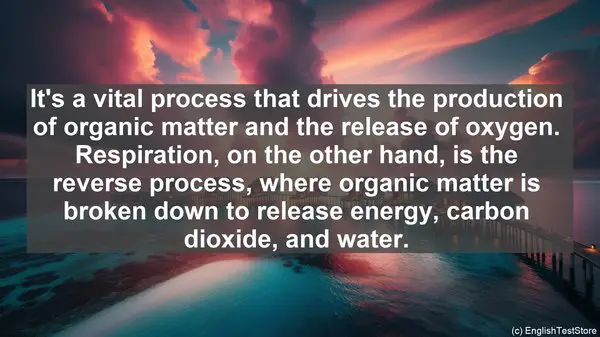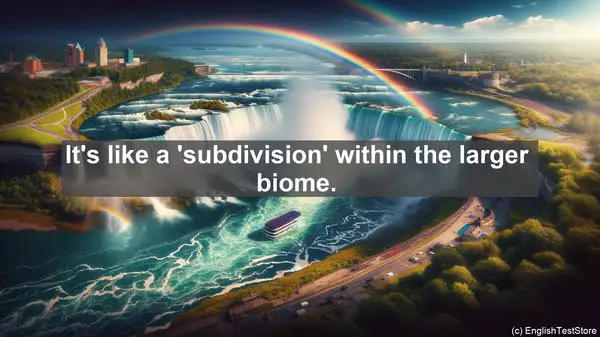Introduction: The Importance of Language in Biogeosciences
Welcome to today’s lesson, where we’ll be diving into the fascinating world of biogeosciences. While this field is known for its complex scientific concepts, it’s equally important to pay attention to the language we use. Misunderstandings can lead to misinterpretations and hinder progress. So, let’s get started with our list of commonly confused words.
1. Weather vs. Climate
One of the most fundamental distinctions in biogeosciences is between weather and climate. Weather refers to the short-term atmospheric conditions, such as temperature, humidity, and precipitation, that we experience daily. On the other hand, climate encompasses the long-term patterns and averages of these weather elements. While weather can change within hours or days, climate represents the broader trends over years or even centuries.
2. Ecosystem vs. Habitat
While these terms are often used interchangeably, they have distinct meanings. An ecosystem refers to a community of living organisms, such as plants, animals, and microorganisms, in conjunction with their physical environment. It’s a complex web of interactions and energy flows. On the other hand, a habitat is the specific place or environment where an organism or a species naturally occurs. It’s like their ‘address’ within the larger ecosystem.
3. Biodiversity vs. Species Richness
Biodiversity and species richness are related but not synonymous. Biodiversity encompasses the variety of life forms at different levels, including genetic, species, and ecosystem diversity. It’s a holistic concept that considers the interactions and interdependencies among these elements. On the other hand, species richness simply refers to the number of different species in a given area. It’s a more quantitative measure of diversity.
4. Photosynthesis vs. Respiration
Photosynthesis and respiration are two fundamental processes in biogeosciences. Photosynthesis, carried out by plants and some microorganisms, involves the conversion of carbon dioxide and sunlight into glucose and oxygen. It’s a vital process that drives the production of organic matter and the release of oxygen. Respiration, on the other hand, is the reverse process, where organic matter is broken down to release energy, carbon dioxide, and water.
5. Biodegradable vs. Non-biodegradable
The distinction between biodegradable and non-biodegradable materials is crucial in understanding their environmental impact. Biodegradable substances can be broken down by natural processes, such as the action of microorganisms, into simpler, non-toxic compounds. They’re part of the natural nutrient cycles. In contrast, non-biodegradable materials, like certain plastics, persist in the environment for long periods, causing pollution and ecological harm.

6. Erosion vs. Weathering
Erosion and weathering are processes that shape the Earth’s surface, but they’re not the same. Weathering refers to the physical, chemical, and biological processes that break down rocks and minerals into smaller particles. It’s a preparatory step for erosion. Erosion, on the other hand, involves the transport and deposition of these weathered materials by agents like water, wind, or ice. It’s like the ‘movement’ phase of the process.
7. Renewable vs. Non-renewable
When it comes to natural resources, the distinction between renewable and non-renewable is crucial. Renewable resources are those that can be replenished or regenerated within a reasonable time frame, such as solar or wind energy. They’re essentially inexhaustible. Non-renewable resources, like fossil fuels, take millions of years to form and cannot be replenished within a human lifetime. Their extraction and use have significant environmental implications.

8. Nitrogen Fixation vs. Denitrification
Nitrogen is a vital element for life, and its cycling in ecosystems is crucial. Nitrogen fixation is the process by which atmospheric nitrogen is converted into a form, like ammonia or nitrate, that can be used by plants. It’s primarily carried out by certain bacteria. Denitrification, on the other hand, is the opposite process, where nitrogen compounds are converted back to atmospheric nitrogen. It’s a step in the nitrogen cycle that completes the loop.
9. Biome vs. Ecoregion
Biome and ecoregion are terms used to describe large-scale ecological areas, but they have different levels of specificity. A biome is a major global or regional ecosystem characterized by its dominant vegetation and climate. Examples include tropical rainforests or tundra. On the other hand, an ecoregion is a more localized area within a biome, with distinct ecological features. It’s like a ‘subdivision’ within the larger biome.
10. Conservation vs. Preservation
While both these terms relate to the protection of natural resources, they have different approaches. Conservation focuses on the sustainable use and management of resources, ensuring their long-term availability. It’s like a ‘wise stewardship’ approach. Preservation, on the other hand, emphasizes the protection of resources in their pristine state, often through strict regulations. It’s like a ‘hands-off’ or ‘no-interference’ approach.
